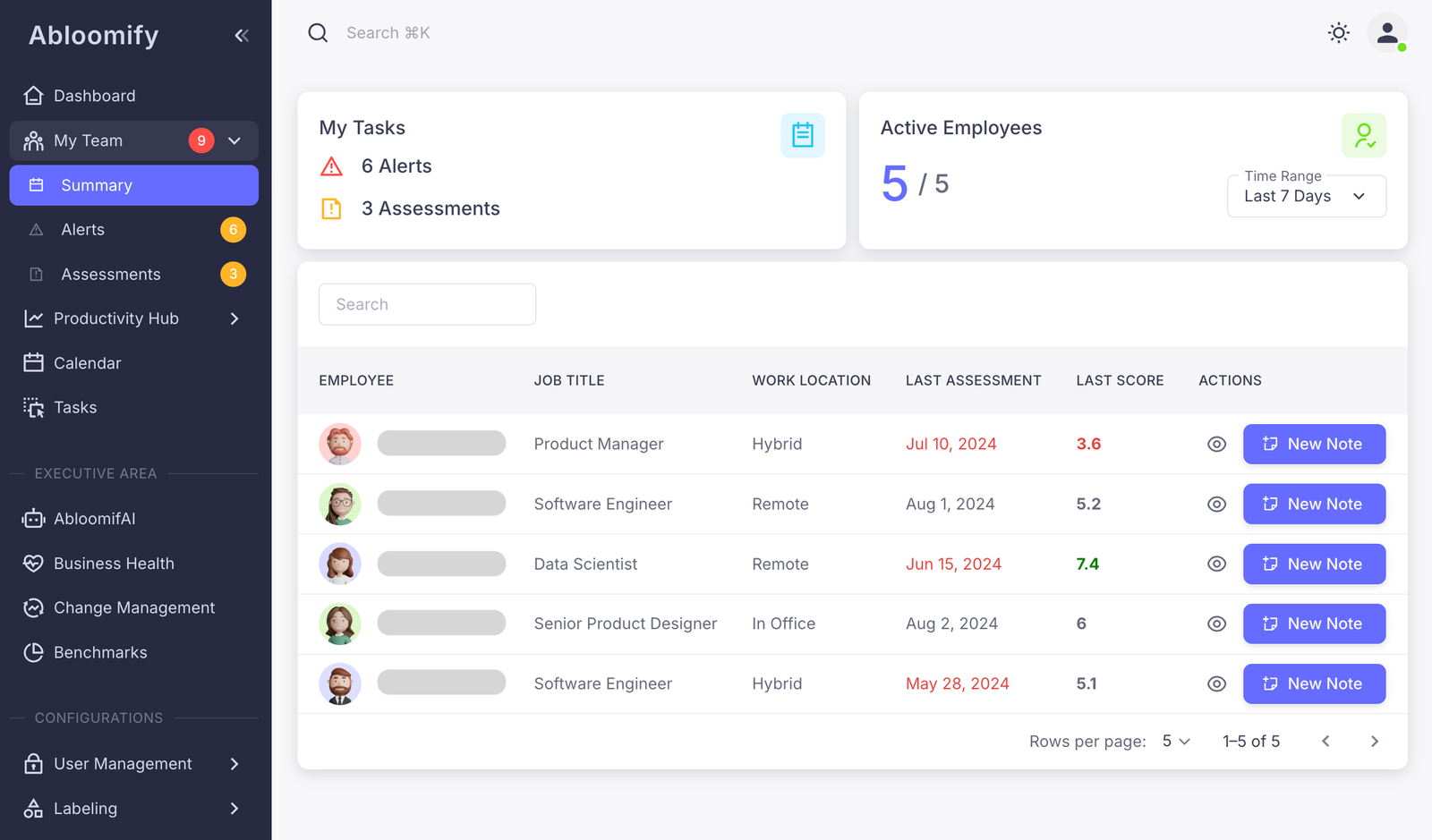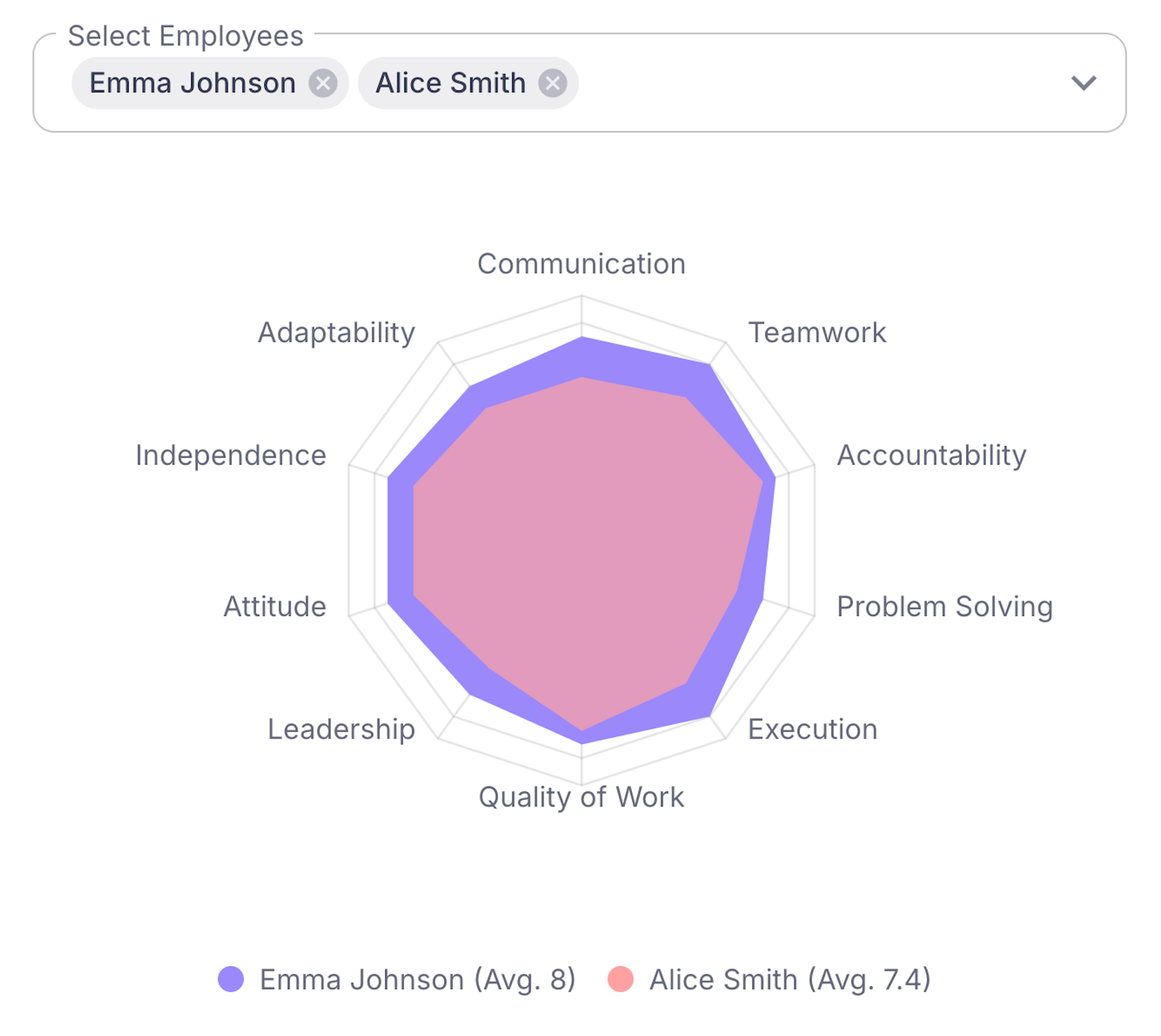Effective communication within tech teams is crucial for innovation and productivity. This article explores innovative solutions to bridge communication gaps, streamline collaboration, and drive growth using cutting-edge tools and strategies.
The Importance of Communication in Tech Teams
Communication is the backbone of any tech team. It’s not just about exchanging information. It’s about connecting people, ideas, and innovations. It fuels creativity and collaboration, essential components for technological advancement. Imagine a team where thoughts and ideas flow freely, fostering an environment where every member feels valued. This level of communication can propel productivity and drive innovation.
However, for many tech teams, challenges often arise. Misunderstandings can creep in due to complex jargon or different expertise levels. Consider these common obstacles:
- Language barriers from diverse, multicultural teams hindered effective exchange.
- Technical and non-technical members spoke different ‘languages,’ causing mismatches.
- Information overload led to missed critical messages and reduced clarity.
These hurdles, if unnoticed, could stall progress and dampen morale. You see, the why of effective communication extends beyond mere project execution. It’s about empowering individuals to solve problems together. It’s a catalyst for teamwork, a cornerstone where diverse minds converge to create singular solutions.
Within this context lies the magic—when team members fully understand and respect each other’s roles and contributions, innovation becomes organic. Explore how strategic communication aligns with improving performance management in tech settings. It’s through these deliberate conversations that true breakthroughs happen, birthing a collaborative culture ready to tackle any challenge.
Identifying Communication Challenges
Exploring the landscape of tech team dynamics, communication hurdles emerge as significant challenges. Remote work settings alter interactions, erasing the tactile feedback of in-person conversations. Consequences include misaligned objectives and fragmented teamwork. The diversity in team skill sets, while enriching, can exacerbate misunderstandings. Individuals process information differently, which may lead to misinterpretation.
In this ever-shifting environment, rapid technological changes further complicate communication. New tools and methodologies quickly replace the old, creating confusion as teams strive to keep pace. It becomes crucial for teams to recognize the subtle signals of communication distress before they escalate into full-scale breakdowns.
Key indicators of communication issues include:
- Frequent project delays due to unclear instructions.
- A noticeable drop in team morale and engagement.
- Repeated conflicts over misunderstood expectations.
- Completion of deliverables that miss the mark.
By identifying these signs early, teams can address and mitigate them effectively. Actionable insights like encouraging candid feedback sessions and integrating regular touchpoints can help. Emphasizing unified goals ensures everyone works towards the same objectives.
Understanding the journey of a tech team reveals these obstacles aren’t just barriers; they are opportunities. Recognizing them early sets the stage for enhanced collaboration. To explore how strategic planning can align with team dynamics, consider the insights from choosing the right work model for tech companies. Such insights can empower teams to turn potential communication pitfalls into pathways for success.
AI-Powered Tools for Enhanced Communication
Imagine a tech team function like a finely tuned symphony, where every section plays their part harmoniously. This is the potential AI-powered tools bring to team communication. Shifting from traditional communication methods to AI-driven solutions offers more than mere efficiency. It forges a shared purpose, maintaining alignment, clarity, and motivation.
Tools like Abloomify’s AI Manager Copilot automate key tasks, letting teams focus on innovation. Here’s how:
- Productivity Alerts: Recognizing when a project is veering off course. These alerts guide teams back on track, ensuring nothing is left to uncertainty.
- Automated Meeting Agendas: Streamlining discussions with clear, focused agendas. Team members can contribute meaningfully, avoiding time drains.
- Performance Assessments: Delivering insightful feedback on individual and team contributions. These insights propel continuous improvement and growth.
Why does this matter? Because AI isn’t about replacing human interaction. It’s about enhancing it. Keeping teams informed through instant data synthesis and suggestions keeps everyone engaged. An engaged team is adept at navigating the complexities of diverse skillsets and remote dynamics.
Incorporating AI into communication processes doesn’t just support teams. It empowers them to transcend challenges and focus on creativity and collaboration. This fosters a culture of trust and keeps misunderstandings at bay. For more insights, explore how AI can unleash productivity and leadership.
The power of AI is not in its computation but in its capacity to strengthen our connections and fuel our shared mission.
Leveraging Feedback for Continuous Improvement
Feedback is the bread and butter of growth in any tech team. It’s a powerful tool to not only improve individual performance but also nurture a culture of trust and openness. When we speak about feedback, we’re not only talking about corrective actions but about creating a dialogue that fosters understanding and empathy among team members. Feedback can transform an organization by providing a clear mirror for individuals to see the impact of their actions.
One approach to harness this powerful resource is through 360° feedback systems. This method brings in perspectives from peers, subordinates, and supervisors, offering a holistic view of one’s performance. It enhances transparency and builds trust by encouraging an open exchange of insights. It is crucial because, in an environment of transparency, the air is clear, and creativity thrives.
Automating feedback collection can significantly streamline this process. Automated systems save valuable time by reducing the administrative burden. They provide actionable insights by efficiently analyzing input patterns. This generates detailed reports that managers can act upon immediately, without getting bogged down in data collection.
Here’s how to leverage feedback effectively:
- Ensure feedback is timely and specific.
- Encourage an environment of gratitude, where feedback is seen as a gift for growth.
- Utilize tools like Abloomify’s performance-management systems to gather and analyze feedback efficiently.
- Create feedback loops, making it an ongoing conversation rather than a one-off event.
By embedding feedback into the fabric of your tech team’s culture, you enable continuous improvement and foster a spirit of collaboration.
Planning for Workforce Flexibility
Remote and hybrid environments present unique challenges for tech teams. Despite physical distances, communication must remain seamless to ensure productivity and harmony. Understanding “why” we need this is crucial: to support collaboration and flexibility for individuals and the team as a whole.
Abloomify’s capacity planning and workload balancing tools rise to this challenge. They address the essential need for insight-driven communication by providing clear views of workload distribution, resource availability, and potential bottlenecks. These features allow teams to stay proactive, identifying and managing issues before they escalate.
The tools enable effective communication by promoting:
- Transparency: Everyone sees who’s doing what and when, encouraging accountability.
- Flexibility: Adjust workloads easily without disruption, supporting dynamic working models.
- Balance: Ensures no one is overwhelmed while others have less to do.
Analyzing these insights ensures alignment with individual skills and workloads, enhancing productivity and job satisfaction. This also contributes to a collaborative environment, reducing friction and encouraging open dialogue.
In the context of flexible working, communication isn’t just about talking. It’s about ensuring everyone feels heard and understood, which is fundamental for a thriving remote team. These features contribute to an engaged workforce and a smooth functioning operation across geographical boundaries. This approach nurtures the human connection in a digital world, keeping the collective “why” at the forefront. For more details on achieving this, check out our insights on transforming workforce analytics with AI.
Optimizing Team Performance Frameworks
Standardized performance frameworks like Abloomify’s 10-category assessments offer clarity in expectations. They act as a bridge, creating mutual understanding between team members. By defining expectations, they eliminate ambiguity, which is often a barrier to effective communication.
Frameworks guide teams by highlighting specific growth paths. They promote a sense of direction and purpose. Team members know precisely what skills to hone to achieve collective goals. This clear path nurtures motivation and engagement.
AI-driven career planning further refines this focus. It tailors skill development plans, ensuring each person’s efforts align with team objectives. This personalized roadmap cultivates an environment where every individual feels valued and integral to the team’s success.
To enhance communication effectively:
- Adopt standardized performance frameworks to establish shared expectations
- Utilize AI tools to create custom career and skill development pathways
- Encourage regular feedback using these tools to refine growth strategies
Continuous improvement becomes a shared journey. It is no longer about isolated efforts but about synchronized strides toward team prosperity. With a clear framework, teams can prioritize essential communication aspects. They ensure that every conversation propels the team towards their collective vision.
In embracing these tools, teams set the stage for seamless communication and continuous growth. By focusing on what’s important, they unlock doors to unmatched efficiency and camaraderie. For more insights on optimizing team performance, check out Abloomify’s essential team performance tools.
Adapting to Organizational Changes
Navigating organizational change can feel like steering a ship through choppy waters. Change is unsettling, but it is through challenge that we find growth. Especially in tech, where the only constant is change, our ability to adapt and evolve is a key driver of success. Why should we focus on this? Because knowing how to adapt is more valuable than simply seeking stability.
Effective communication during transition periods is not about parroting updates. It is about genuinely connecting team members to a shared purpose. As teams encounter new technologies or processes, leaders should anchor communications to the organization’s core vision. This helps maintain clarity and focus amidst the noise of change.
Here are strategies to manage communication during change:
- Engage early and often. Communicate changes as soon as possible to allay fears and build trust.
- Encourage feedback loops. Provide platforms for team members to express concerns and suggestions.
- Prioritize transparency. Use honest, jargon-free language to create mutual understanding.
- Provide training resources. Equip teams with the knowledge and skills they need to embrace new tools and processes.
Tools for change management can streamline this adaptation. Platforms like Abloomify guide teams through changes by minimizing disruption with structured workflows. Feedback mechanisms within these tools allow leaders to measure the impact on team dynamics, helping to mitigate potential issues before they escalate. For more insights on maintaining tech teams’ momentum, explore strategies for modern workplaces in Abloomify’s resources.
Understanding the “why” behind these changes enables teams to align efforts towards a brighter, shared future.
Enhancing Privacy and Trust
To build a successful tech team, understanding the importance of privacy-first design is crucial. It goes beyond safeguarding data; it nurtures a culture of trust. The integrity of communications tools hinges on their ability to protect user information while fostering open dialogue.
Trust can blossom when team members feel secure about their data privacy. Employee engagement AI insights reveal that transparency fosters a positive environment. The goal is to enhance communication while respecting privacy. Tools designed with privacy in mind ensure that everyone feels confident and safe.
However, how do you gain insights without betraying this trust? The answer lies in aggregate data insights. By focusing on collective data, teams can identify patterns without compromising individual privacy. This approach leads to actionable insights and fosters a sense of security. Employees know they are contributing to overall growth yet remain privately protected.
Maintaining employee trust requires ongoing transparency. Continually communicate how data is used and why it benefits the team. When employees know that data used serves their interests, trust and engagement naturally deepen.
Think about the benefits:
- Increased trust leads to more open communication.
- Transparency enhances team cohesion.
- Aggregate data empowers teams without overstepping privacy boundaries.
By focusing on privacy-first design and transparent communication practices, tech teams not only safeguard information but also strengthen bonds. This approach prepares teams for seamless integration as they adopt evolving communication solutions.
Integrating Communication Solutions Effectively
Integration of advanced communication solutions with existing workforce management tools isn’t just a technological upgrade. It’s a strategic move that transforms how we understand and nurture our teams. Why does this matter? It’s about creating a seamless experience for everyone involved, leading to real change.
First, define the need. Understand your team’s pain points and how technology can alleviate them. The goal is to align tools with the team’s communication style. Next, prioritize compatibility. Choose solutions that integrate effortlessly with existing systems. This reduces disruptions and ensures a smooth transition, fostering confidence among team members. Look for insights into team dynamics and productivity with tools that provide analytics driven by AI.
Implement incrementally. Start with a pilot program, which allows you to gather feedback and make necessary adjustments before a full-scale rollout. By engaging the team in decision-making, you build a sense of ownership that boosts acceptance and motivation. Regular training sessions are crucial for demystifying new systems and ensuring everyone can harness the tools effectively.
Finally, focus on feedback and iteration. Establish mechanisms for continual improvement through feedback loops, leading to thoughtful iterations of processes. Learn from the data generated to make informed decisions on productivity and areas needing attention.
For further insights on managing productivity and performance improvement through effective solutions, consider exploring Essential Team Performance Tools for IT.
Unifying Team Dynamics for Growth
When a tech team truly communicates, magic happens. Unified communication does more than share information. It cultivates a culture of trust and collaboration. Teams move beyond barriers when they understand the “why” behind their tasks. This clarity fuels unity and elevates performance.
Consider the impact of effective communication on project timelines. A leading tech firm once faced delays due to fragmented updates and siloed teams. By introducing a unified communication platform, they saw an increase in project completion rates. Team members could share insights instantly, reducing misunderstandings and preventing duplicated efforts. The result? Increased productivity and timely project delivery.
Real-world examples demonstrate the transformative power of cohesive communication. When a global software company integrated collaborative tools, they eliminated communication bottlenecks. Virtual brainstorming sessions became a regular feature, driving innovation and inclusivity. The shift led to a 25% boost in team morale and creativity.
To harness the full potential of unified communication, tech leaders must embrace AI solutions. AI can analyze communication patterns and suggest improvements, tailoring strategies to fit unique team dynamics. Embracing these technologies offers a pathway to dynamic communication.
For those seeking tailored solutions to enhance their team’s communication strategies, consider reaching out to Abloomify for customized support. Their insights on ways to enhance communication and engagement at the workplace are instrumental in fostering cohesive and efficient teams. Working together, let’s turn unified communication into the foundation of exceptional team growth.
Final words
Effective communication is the backbone of successful tech teams. Leveraging AI-driven tools can unify collaboration efforts. For tailored solutions, contact Abloomify and elevate your team’s performance today.



